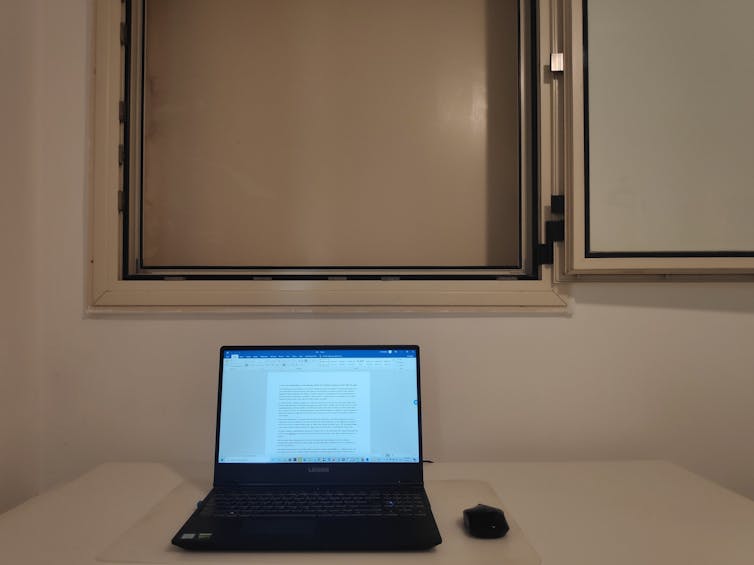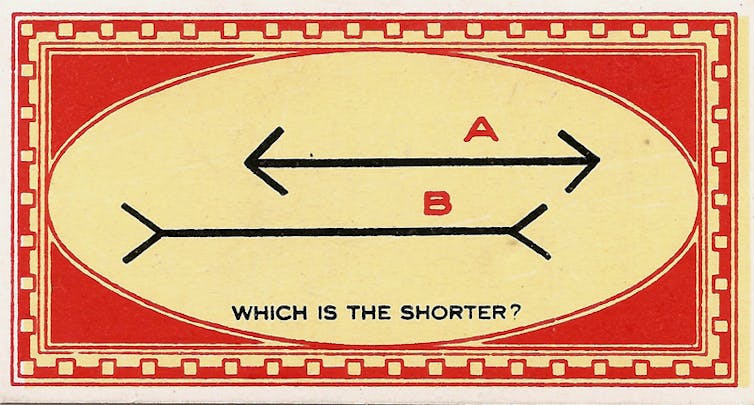Pro-Palestinian demonstrators in the world’s capitals in mid-May 2021 blamed the Israeli government for recent bloodshed in Israel and Gaza, and called on world leaders to pressure Israeli Prime Minister Benjamin “Bibi” Netanyahu into calling a ceasefire. Protesters emphasized the perceived power imbalance between Israel and Palestine. According to this view of the asymmetry between the two sides, Israel is a major economic and military power while Hamas-led Gaza is poor, weak and has suffered many casualties.
In Israel – where I’ve lived and worked for 25 years, and from where I write these lines from the reinforced concrete saferoom legally required in all apartments erected here since Saddam targeted Israeli civilians during the first Gulf War – debate is raging over different asymmetries.

Where Israel’s critics see a powerful nation attacking a weak one, Israelis see a sovereign state defending itself against terrorists who deliberately target civilians. And where Israeli right-wingers see violent betrayal of Israeli Jews by Arab citizens with whom they’ve coexisted for decades, Israeli left-wingers see a Jewish majority that hasn’t done enough to ensure equal rights for its Arab minority.
As a cognitive psychologist, I am not surprised by the mirror images that different sides in the conflict hold of the asymmetries between them. Asymmetries are perceptions and, just like optical illusions, people can look at the same sets of facts and events and see – or be persuaded to see – different things.
Israel-Hamas asymmetry
In op-eds and viral social media posts, many Israelis have been contrasting Arab aggression with Jewish restraint. They talk about Hamas targeting missiles at Israeli civilians and inflaming dormant inter-ethnic tensions in Israel’s mixed cities. And they describe themselves as going to unprecedented lengths to minimize civilian casualties in Gaza and to preserve a delicate coexistence that took years to construct between Israel’s Jewish and Arab citizens.
This asymmetry is diametrically opposed to the one emphasized by Israel’s critics. Palestinians and their supporters cast Israel as the aggressor and the Palestinians as weak victims. Most Israelis see Hamas and their Arab Israeli supporters as the aggressors, and perceive the group to be growing stronger, as the range of its missiles and incitement of anti-Jewish violence extends ever deeper into Israeli territory, threatening its major cities.
Right-left asymmetry
But there is a split in Israeli politics. Those on the right see Israel’s Arab citizens attacking innocent Jews, torching synagogues and destroying property in neighborhoods they’ve shared for years. Those on the left, however, see their government’s continued disregard for the rights of Israel’s Arab citizens and reluctance to apply the full force of the law equally to Arab and Jewish rioters.
Posts by right-wing commentators this week contrasted the relative frequency of acts of violence committed by Arab Israelis on Jewish Israelis and their property with the relative absence of corresponding violence perpetrated by Jewish Israelis on Arab Israelis.
Left-wing commentators, on the other hand, focused on Israel’s shared responsibility for, and moral duty to address, the pent-up frustrations of Israel’s Arab minority.

The role of framing and social context
Cognitive psychologists deal with such differences in perception all the time.
One example is the Muller-Lyer illusion, in which two lines of identical length are made to seem shorter or longer by the addition of “fins,” which slope inward or outward, respectively at each end. Similarly, in the current conflict, perceptions of who is aggressor and whom victim are shaped by the inclusion or exclusion of additional data, such as who has suffered the most casualties, who has more effective defenses, and so on. Like the fins in the Muller-Lyer illusion, such data can shape perception irrespective of their relevance.
Another example is Solomon Asch’s conformity experiment, in which a group of participants is required to identify which of three lines on one card is the same length as a reference line on another card. But there’s a catch: All but one of the participants has been told in advance to select a line that is obviously shorter than the reference line. The uninitiated participant usually changes his correct answer to conform with the incorrect answer chosen by the rest of the group.
A similar dynamic seems to be playing out on social media around the current Israel-Palestine conflict. Some celebrities who initially posted relatively balanced messages later adopted more partisan positions in response to pressure from followers.
The impact on domestic politics
One person who has gained from Israelis’ shifting views on Jewish-Arab asymmetries is Netanyahu himself.
Earlier this month, an “anyone but Bibi” coalition government seemed about to be formed following Israel’s fourth inconclusive election in two years. Unprecedentedly, Naftali Bennett, leader of the right-wing, and largely Jewish, Yamina (“Rightwards”) party, was deep in talks with Mansour Abbas, leader of the United Arab List party. Last week, Bennett pulled out of the talks. One week, 3,000 Hamas missiles and several more riots later, the prospect of such talks being revived seems farther away than ever.
So Bibi is back on top, performing very publicly the role of heading Israel’s military response and reaping the political rewards of the greatest crisis of trust in decades between Israel’s Jewish and Arab citizens. A week is a long time in politics.
[You’re smart and curious about the world. So are The Conversation’s authors and editors. You can read us daily by subscribing to our newsletter.]
"between" - Google News
May 19, 2021 at 10:18PM
https://ift.tt/3bE4EPV
As trust between Israeli Jews and Arabs reaches new lows, Netanyahu rises again - The Conversation US
"between" - Google News
https://ift.tt/2WkNqP8
https://ift.tt/2WkjZfX
Bagikan Berita Ini















0 Response to "As trust between Israeli Jews and Arabs reaches new lows, Netanyahu rises again - The Conversation US"
Post a Comment